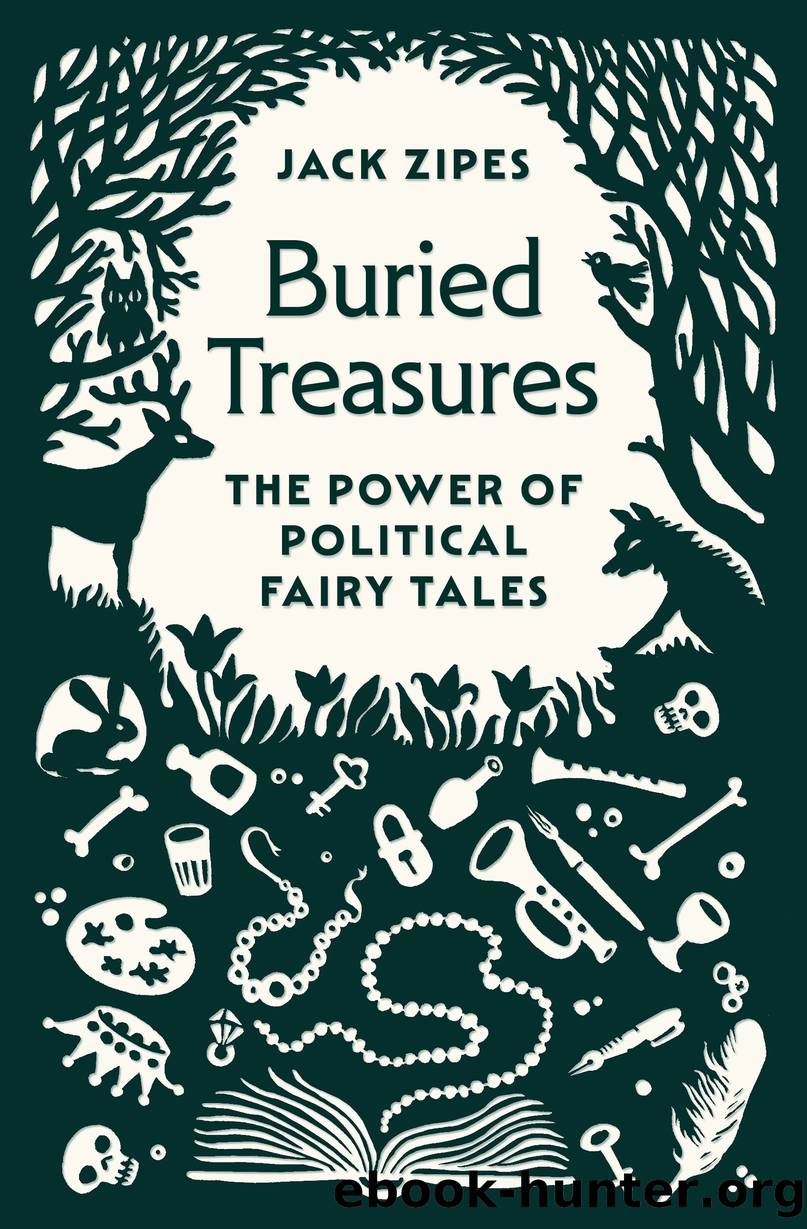Buried Treasures by Jack Zipes;

Author:Jack Zipes;
Language: eng
Format: epub
Publisher: Princeton University Press
Published: 2022-11-16T00:00:00+00:00
6
Christian Bärmann
THE DELIGHTFUL ARTIST NOBODY KNOWS
The Giant Ohl takes charge. (Illustration by Christian Bärmann.)
VIRTUALLY NO ONE in Germany or the rest of the world knows anything about the brilliant painter and storyteller Christian Bärmann (1881â1924), who died at the young age of forty-three. A short synopsis of his life reads like a fairy tale with an open ending.1 But it is a somewhat sad fairy tale as well, for he died in the prime of his life, and most of his paintings and drawings were destroyed in a fire at the Glaspalast in Munich on June 6, 1931. During a British bombardment in 1945, more of his works were eradicated at the Martin von Wagner Museum, part of the University of Würzburg.
Born in Würzburg to a poor bakerâs family, Bärmann was trained at a young age to become a tailor because he was never successful at school. However, he rebelled against his family in 1896 and went to Hamburg, where he began working on ships, and traveled to South America a few times. In 1898, he returned to Würzburg, where his mother, now a widow, encouraged him to become an architect. With his motherâs help, he mustered enough money to attend a school for architecture and art in Munich. Once there, however, he was rejected by the Academy of Art and was compelled to turn to a private school directed by a prominent Slovenian painter, Anton Ažbe (1862â1905), who recognized Bärmannâs great talent for painting and illustration. A generous but strict brilliant teacher of fundamentals, Ažbe allowed Bärmann to study at his school without paying tutition. It was there, among many modernist painters such as Wassily Kandinsky, Ivan Bilibin, Leonard Frank, Igor Grabar, and other notable artists, that Bärmann was encouraged to give free rein to his imagination while learning from Ažbeâs method using the Main Line and the Ball Principle. Thanks to Ažbeâs rigorous training in human anatomy, Bärmann gradually became a master of figure drawings while exploring aquarelle and oil painting.
During the twentieth century, Bärmann also served as an apprentice for various painters in Munich and became known not only for his use of unusual colors but also for realistic paintings of Würzburg. In addition, Bärmann demonstrated a gift for sketching and drawing animals of different kinds, especially strange, fantastic creatures. He began publishing his graphic work in two of the major magazines of that time, Simplicissmus and Die Jugend. By 1905, he had won many awards for his drawings and sketches, including the Rome Prize, which enabled him to travel to Italy to study the great Italian painters and improve his techniques and understanding of classical art. After spending about four years in Italy, he returned to Munich in 1910, where he spent a good deal of his time studying animals and nature. He had a special fondness for illustrating frogs, rabbits, birds, and insects. This was one of the reasons the prominent writer Waldemar Bönsels asked him to contribute sixty illustrations to his famous childrenâs book, Die Biene Maja (Maja the Bee, 1912).
Download
This site does not store any files on its server. We only index and link to content provided by other sites. Please contact the content providers to delete copyright contents if any and email us, we'll remove relevant links or contents immediately.
4 3 2 1: A Novel by Paul Auster(11795)
The handmaid's tale by Margaret Atwood(7455)
Giovanni's Room by James Baldwin(6814)
Big Magic: Creative Living Beyond Fear by Elizabeth Gilbert(5359)
Asking the Right Questions: A Guide to Critical Thinking by M. Neil Browne & Stuart M. Keeley(5358)
Ego Is the Enemy by Ryan Holiday(4960)
On Writing A Memoir of the Craft by Stephen King(4667)
The Body: A Guide for Occupants by Bill Bryson(4587)
Ken Follett - World without end by Ken Follett(4448)
Bluets by Maggie Nelson(4263)
Adulting by Kelly Williams Brown(4236)
Eat That Frog! by Brian Tracy(4153)
Guilty Pleasures by Laurell K Hamilton(4120)
White Noise - A Novel by Don DeLillo(3832)
The Poetry of Pablo Neruda by Pablo Neruda(3820)
Fingerprints of the Gods by Graham Hancock(3740)
Alive: The Story of the Andes Survivors by Piers Paul Read(3733)
The Book of Joy by Dalai Lama(3700)
The Bookshop by Penelope Fitzgerald(3621)
